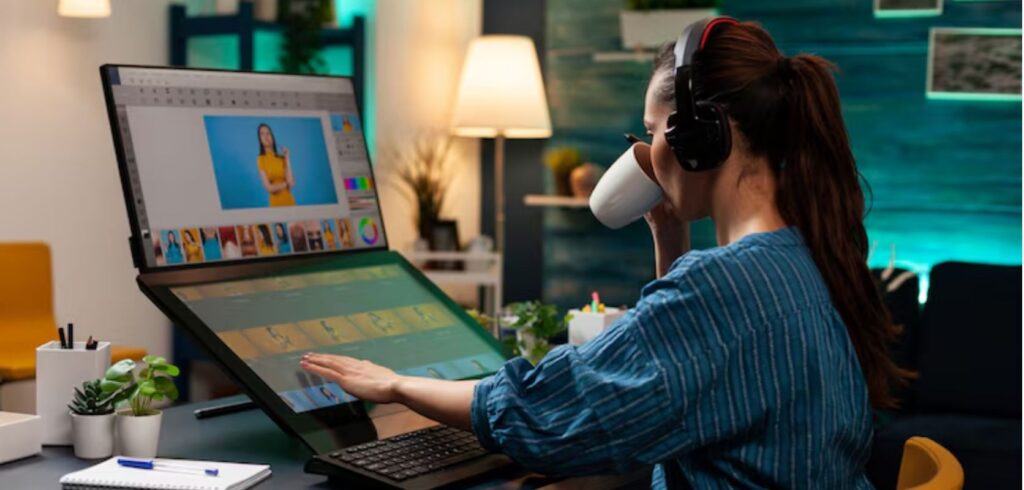In today’s digital age, the importance of having a visually stunning website cannot be overstated. A well-designed website not only captures the attention of visitors, but also helps to establish credibility and trust with potential customers. The role of a skilled web site designer is crucial in crafting a visually appealing and user-friendly online presence for businesses and individuals alike. In this article, we will explore the key aspects of what it takes to create a truly jaw-dropping website that leaves a lasting impression on anyone who visits.
Join us as we delve into the world of web design and uncover how expert designers bring creativity and technical skills together to produce captivating websites that stand out in today’s competitive online landscape.

Understanding the Principles of Visual Design
- Balance: Achieving visual equilibrium in a design by distributing elements evenly throughout the composition.
- Contrast: Creating a defined difference between elements to make certain aspects stand out.
- Emphasis: Highlighting specific areas or elements to draw attention and create focal points within the design.
Visual design principles are essential for creating a visually stunning website. By incorporating these principles, web site designers can effectively communicate their message, improve user experience, and enhance the overall aesthetic appeal of the site. Understanding how balance, contrast, and emphasis work together can help designers create more engaging and impactful designs that resonate with users.
Utilizing Color Theory and Typography
Color theory plays a crucial role in web design. By choosing a cohesive color palette, web site designer can evoke specific emotions and create a visually appealing website. Understanding the basics of color psychology can help designers make informed decisions about which colors to use for different elements on the site.
Typography is another essential aspect of web design that can greatly impact the overall look and feel of a website. Selecting the right fonts and font sizes can enhance readability and ensure that important information stands out to users. Consistency in typography across all pages helps create a cohesive browsing experience for visitors.
Incorporating both color theory and typography effectively can elevate the aesthetic appeal of a website while also improving usability. When used thoughtfully, these design elements work together to communicate brand identity, guide users through content, and ultimately contribute to an engaging user experience.

Enhancing User Experience with Multimedia Elements
Incorporating engaging multimedia elements such as images, videos, and animations can greatly enhance the overall user experience on a website. Visual content not only captures users’ attention but also helps convey information in a more compelling and memorable way. When used strategically, multimedia elements can create an immersive browsing experience that keeps visitors engaged and encourages them to explore further.
Choosing the Right Multimedia Elements
When selecting multimedia elements for a website, it’s crucial to consider factors such as relevance, quality, and loading times. Images should be high-resolution and optimized for web use to ensure crisp visuals without compromising loading speed. Videos should be well-produced and relevant to the content they accompany. Animations should be subtle yet eye-catching, adding a dynamic element to the page without overwhelming or distracting users from the main message. By carefully curating multimedia elements, web site designer can create a visually stunning website that effectively communicates its message while providing an enjoyable user experience.
Implementing Responsive Design for Seamless User Experience
To create a visually stunning website, web designers must prioritize responsive design. This means ensuring that the website adapts fluidly to different screen sizes and devices. By implementing responsive design principles, users can access the site seamlessly on desktops, laptops, tablets, and smartphones.
Key aspects of responsive design include flexible grids, images, and media queries. These elements allow the website to resize and reorganize content based on the user’s device. Prioritizing responsiveness not only enhances user experience but also improves search engine rankings as Google favors mobile-friendly websites.
Incorporating a mobile-first approach is essential in today’s digital landscape. By designing with mobile users in mind first, web designers can ensure that all audiences have a positive browsing experience regardless of their device preference.

Kobe Digital: #1 Web Design Firm In New York
- Kobe Digital, the leading web design firm in New York, is known for its visually stunning websites that captivate audiences.
- With a team of skilled designers and developers, Kobe Digital crafts websites that are not only beautiful but also functional and user-friendly.
- From sleek layouts to eye-catching graphics, Kobe Digital’s websites stand out from the competition and leave a lasting impression on visitors.